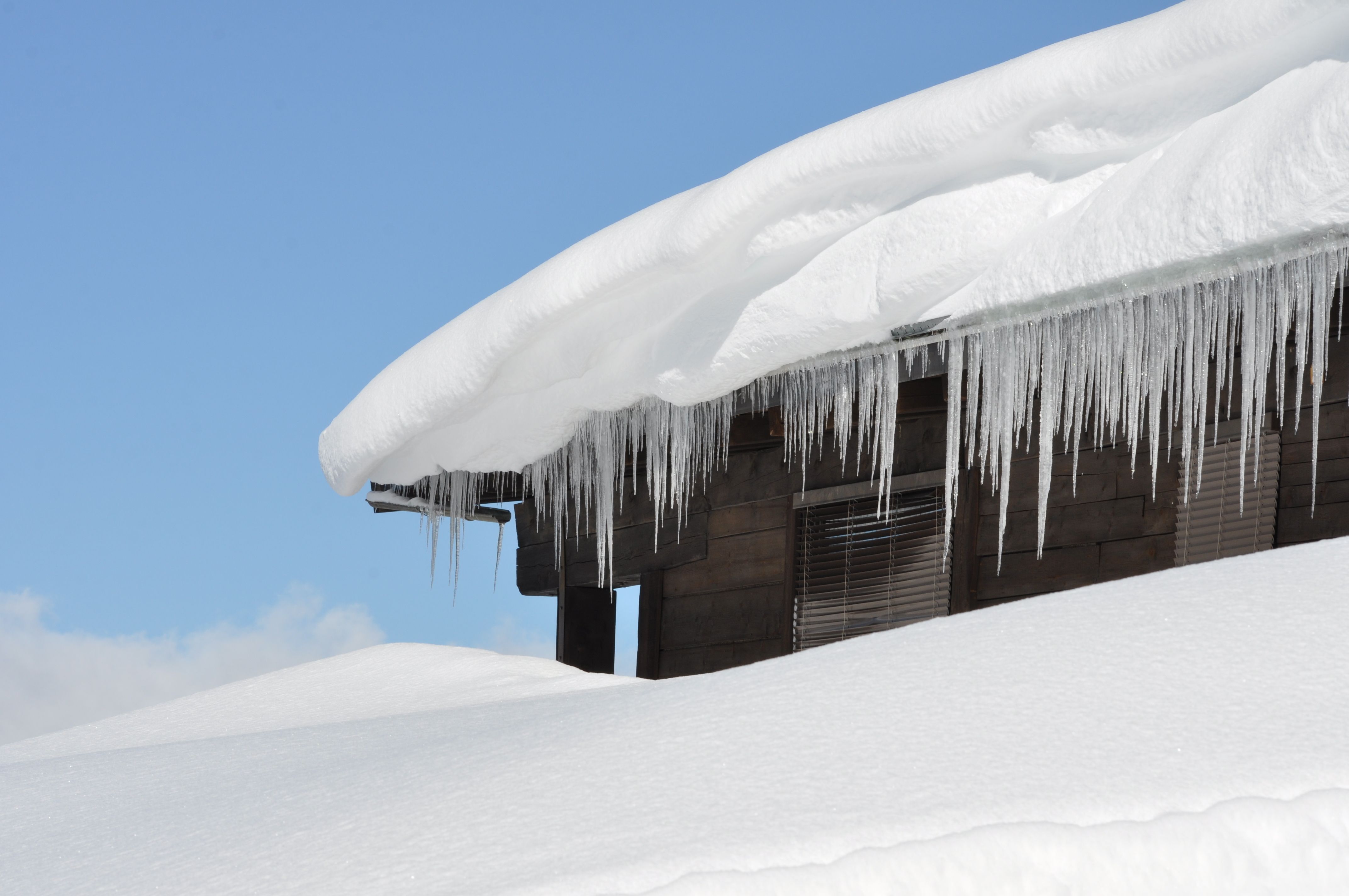Temperature Fluctuations Can Wreak Havoc on Your Roof
Water is one of the most destructive elements. In the form of ice, it has the potential to cause significant damage to your roof. The weather frequently drops below freezing in Colorado, and snow and ice are just a fact of life that homeowners must deal with. However, many people do not realize that the frequent and dramatic temperature fluctuations we experience exacerbate the problems caused by the ice.
Not only does the weather outside fluctuate, but your home's temperature also changes, affecting your roof temperature as well. This can mean that as ice builds up on your roof, it can freeze and re-freeze several times over as it continues to accumulate on your roof. This fluctuation can allow water to seep into small holes. Because water expands as it freezes into ice, it puts pressure on these tiny holes, making them bigger, and leading to more significant damage and roof leaks.
Read our blog on winter roof leaks to learn more.
Changes in Temperature Can Lead to Ice Dam Formation
An ice dam is a large block of ice that forms on your roof, typically on the lower areas of your roof. These blocks of ice can inhibit drainage and block your gutters. Ice dams generally result from fluctuations in the temperature of the roof itself, sometimes caused by poor ventilation or inadequate insulation in your attic or crawlspace.
Because heat rises, the peak of your roof may be warmer, causing snow and ice to melt. As the water runs down your roof, it begins to cool, reforming into ice on the lower sections of your roof. When this happens multiple times, the ice builds up into large sheets or blocks. When new water reaches these blocks, it has nowhere to go, and moisture can get forced back up into your roof and under shingles.
The last thing you want is moisture inside your roof's structure. This can degrade your roof's materials, cause structural damage to your home, and may even lead to mold growth. If you are dealing with ice dams on your roof, you should have them removed as quickly as possible. Reach out to a roofing specialist, like ours at Divine Roofing, Inc., for help.
Excess Weight Puts Increased Pressure on Your Roof
Many people forget that ice is denser than snow. While your roof may be able to handle several feet of snow, it cannot always take the weight of large amounts of ice. As the ice builds up, it gets heavy, putting extra stress on your roof. The intense weight of ice to your roof may speed up the rate at which your roof wears down, leading to more repair issues and a shortened lifespan.
Because of its weight, ice can degrade your roof's structural integrity and even cause it to sag. Furthermore, if your roof already has weak points, the ice's weight can push these weak spots past their breaking point.
The Weight of Icicles Can Also Weaken Your Gutters
Just as ice dams are incredibly heavy, so too are icicles. Icicles form when gutters are obstructed or when water is blocked from freely flowing off and away from your roof. In fact, ice dams are common culprits when it comes to icicle formation. As snow and ice melt and water flows down your roof, it meets the obstruction and begins to build up. Because melting is very slow, the water eventually drips over the obstruction's edge, causing icicles.
Though some people find icicles pretty to look at, they are not good for your roof. As it begins to grow, the icicle's weight puts undue stress on your roof and can even rip your gutters off of your house. Furthermore, icicles present a safety hazard and have been known to injure people when they fall or break off.
Click here for more information on protecting your roof from snow and ice damage.
Should You De-Ice Your Roof?
Many homeowners are rightfully concerned about ice buildup on their roofs. However, should you attempt to de-ice your roof on your own? There are several steps homeowners can take to protect their roofs from ice and to remove ice that is already there. However, you want to pay very careful attention to your safety and the safety of those around you. Icy roofs are slippery and can be dangerous. You also want to make sure you are buying appropriate materials for your roof and be careful that you do not damage your roof in the process of removing any ice.
To protect your roof from ice, you can:
- Rake your roof with a snow rake (do not use a garden rake)
- Melt ice with heated cables
- Improve your attic ventilation
- Improve your attic insulation
- Schedule annual roof inspections and roof maintenance with a professional roofer
If you are new to homeownership, or if you are not comfortable with DIY projects, you may wish to work with a professional before attempting to de-ice your roof yourself.
For tips on de-icing your roof, click here.


